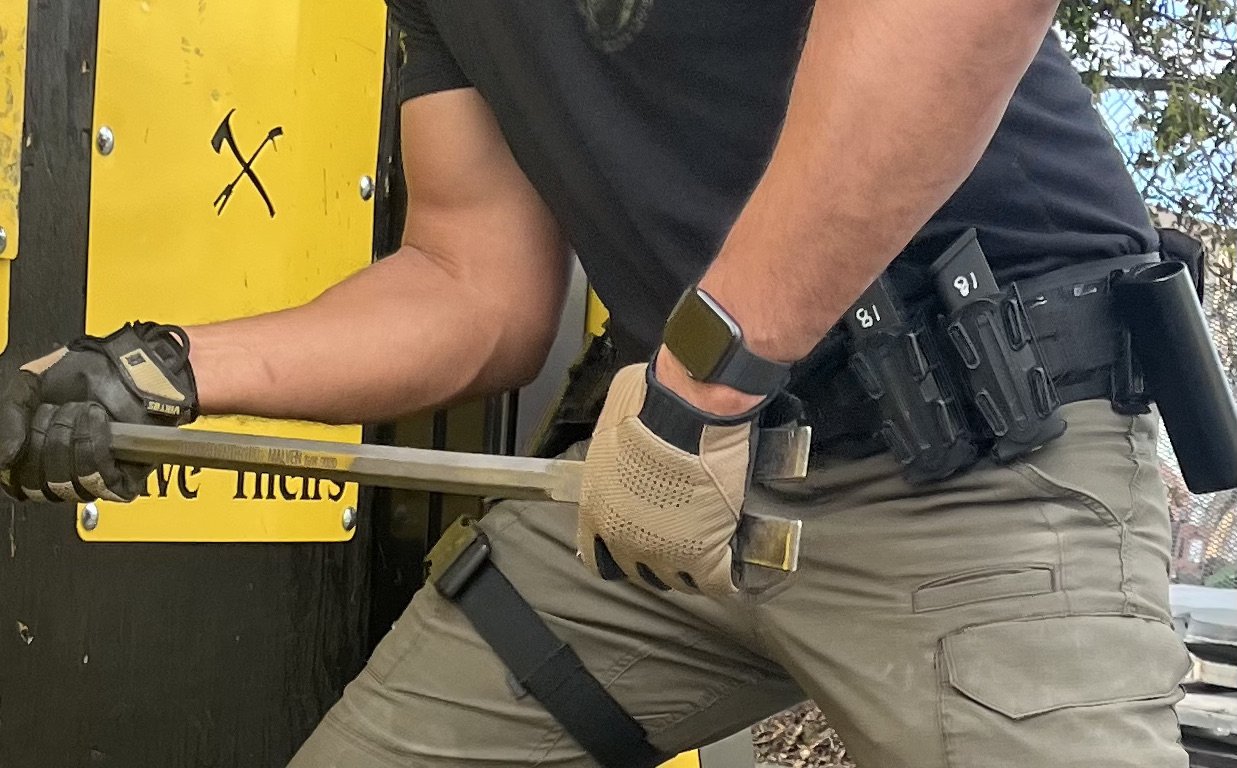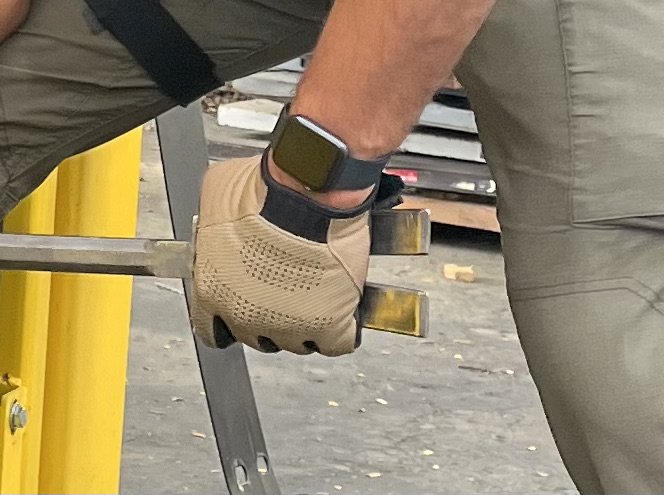Always Handshake Your Fork
The first time we see a Halligan in the fire service is usually during the Fire Academy or Probie School. What we don't recognize early in our career is what an amazing tool this truly is and how much it can help us in a variety of situations in the future. Let's do a quick review.
A Halligan bar, also known as a Halligan tool or Halligan spike, is a versatile firefighting and forcible entry tool. Firefighters and rescue personnel commonly use the Halligan bar to gain entry to buildings, vehicles, or confined spaces. Its design provides versatility for various tasks encountered during emergency situations. The Halligan tool is a standard part of many firefighting and rescue tool kits due to its effectiveness in forcible entry and its ability to handle different challenges encountered in the field.
It consists of three main components:
Adze: The adze is a flat, wide, and slightly curved blade that is used for prying, chopping, and digging. It can be effective in breaching doors, walls, or other obstacles.The majority of adze are 2" wide.
Pick: The pick is a pointed tool at the opposite end of the adze. It is used for piercing and breaking through materials like wood, drywall, or other surfaces. The pick can be helpful in creating openings or holes. It is approximately 6" long with a slight curve.
Fork: The fork is a forked or fork-like feature located between the adze and pick. It is used for leverage and twisting, allowing users to manipulate objects or pry apart materials.
What makes this tool so amazing is its ability to create force through leverage. Let's review the camming method so often used with the Halligan bar. The Halligan bar is designed with a flat, wide, and slightly curved adze blade. This blade is shaped to provide a large surface area for prying and wedging. The curved shape allows for optimal contact with the surface you're working on, in this case lets say a door. When we introduce the adze between the door and the door stop we want to cam down on the fork end making the adze rotate in a circle. As the tool rotates it creates end tip pressure on both ends of the halligan adze and "bites" into the door and stop adding traction and stability to the tool. Now one hand is stabilizing the neck of the tool while the other hand is creating the force into the tool. The opposite end of the tool being used is the shaft of the tool or the fork and this is where I want to encourage proper hand placement.
First a bit of thought regarding torque or leverage being placed onto the adze. If you imagine the adze is a wheel with an axle in the center of it. The center of the axle is attached to the center of the shaft perpendicularly. This would allow us to see a 2" tire on our 30" lever, assuming our hand is on the fork (furthest point) and not on the shaft of the tool.
How much leverage am I creating?
If you have a two-inch wheel on a 30-inch (2.5 feet) lever, you can calculate the mechanical advantage (leverage) by dividing the length of the lever arm by the radius of the wheel.
Mechanical Advantage (MA) = Length of Lever Arm / Radius of Wheel
In this case:
MA = 2.5 feet (length of the lever arm) / 0.1667 feet (radius of the wheel, as 2 inches converted to feet)
MA ≈ 15
So, the mechanical advantage in this scenario is approximately 15:1. This means that for every 1 unit of force you apply to the lever, you can lift or move a load 15 times heavier.
This means if you apply 100 lbs of force to the tool, then at the end of the tool you can create 15x or 1500 lbs. of force. This is why camming has such a strong effect. This is also one of the key reasons we need to handshake our fork. By grabbing the tool at any place along the shaft we have in essence shortened our lever and that has immediately decreased our mechanical advantage. This is also the reason we have to "work harder" with a 24" halligan because of the leverage loss due to the shorter overall length.
One more thought on this handshake idea. One of the keys to a successful force is keeping the tool rotating in a specific plane. In other words when we allow the tool to rotate in our hand the top and bottom of the adze can rotate out of the door or out of proper placement in the door and literally rotate out of place and the cam is lost. When we place our hand on the shaft of the Halligan tool especially if it is wet, muddy, etc. the tool can more easily rotate because the grip pressure to hold the tool in its proper plane may be too much. When we handshake the fork we are able to hold the tool and due to the shape of the fork it creates a more solid hand position and decreases needed force to hold the tool in the proper plane.
By combining the design of the Halligan bar's adze end with proper technique, body positioning, and the right angle of attack, firefighters and rescue personnel can effectively create leverage to open doors, breach walls, or manipulate objects during emergency situations.
Now get out there and force some doors !!
Chuck






